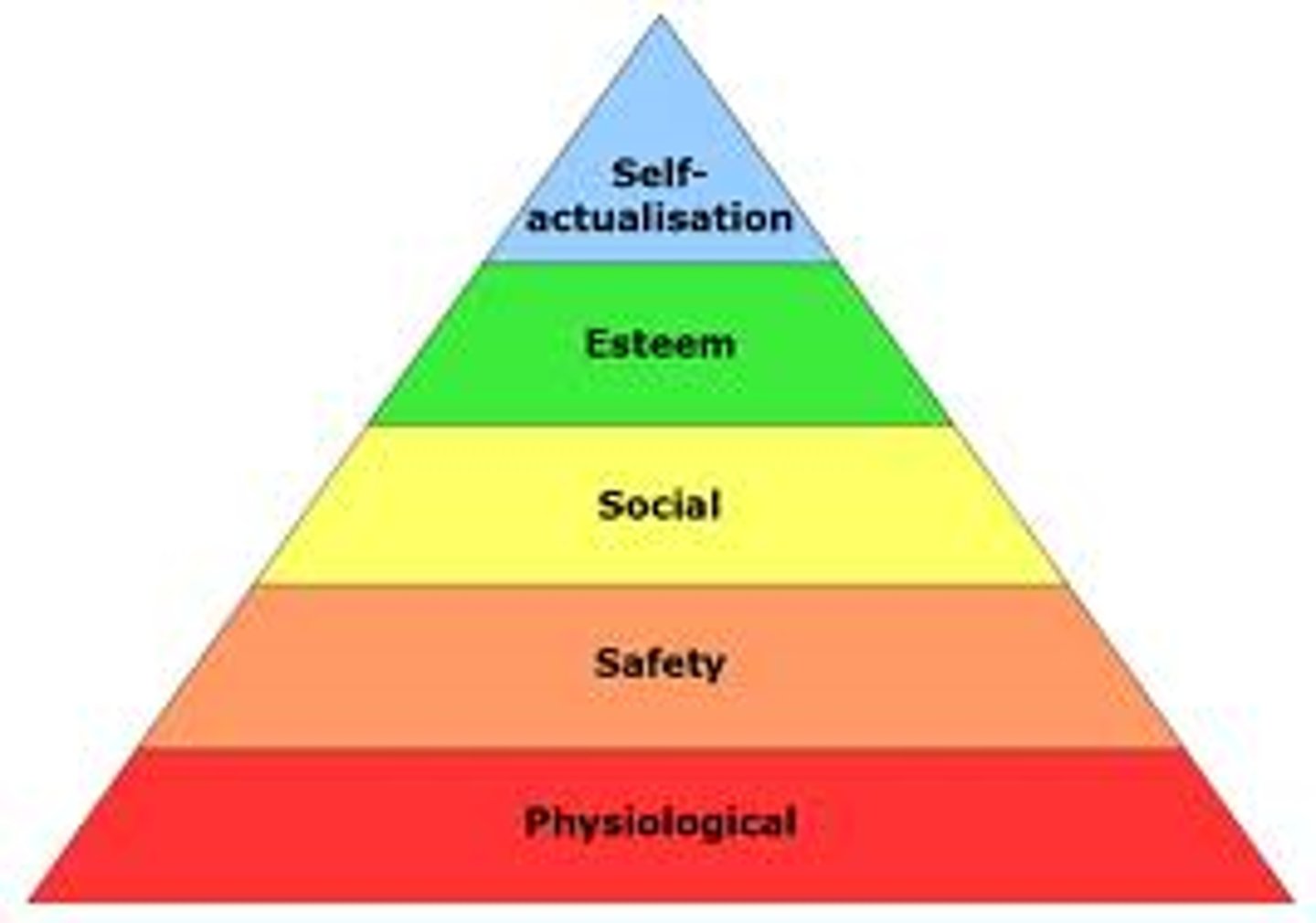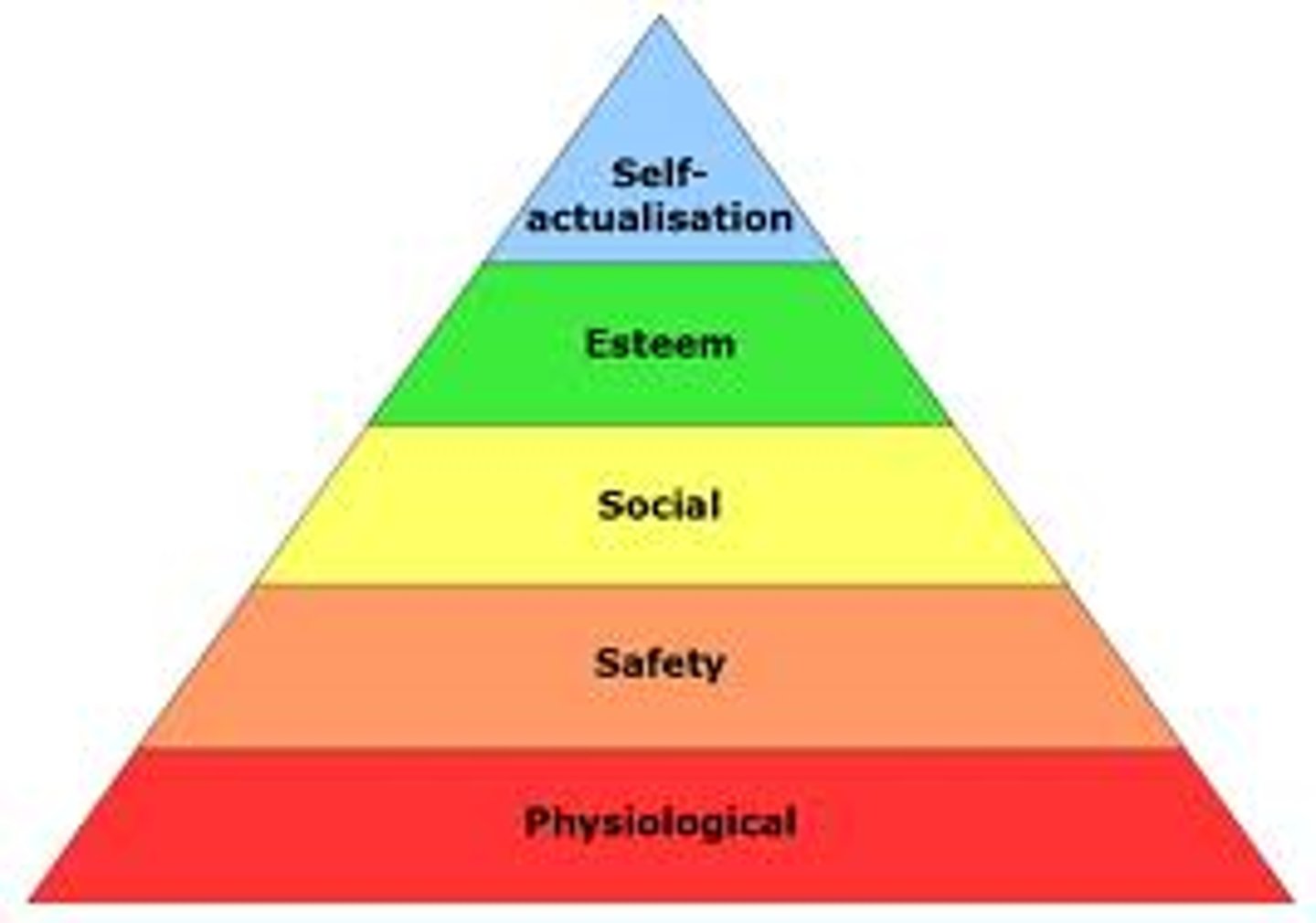Humanistic APPROACH
1/15
There's no tags or description
Looks like no tags are added yet.
Name | Mastery | Learn | Test | Matching | Spaced |
|---|
No study sessions yet.
16 Terms
Basic assumptions
- Humans have free will and are the main agents in driving their own personal development
- We are also affected by external and internal influences
- Humans are unique, creative and uniquely good
- People are best studied subjectively + Ideographically as there are no general laws of behaviour
- Everyone has an innate tendency towards Self-actualisation
Ideographic
Focusing on individual as a unique entity rather than applying general laws/patterns
Client centered therapy
- Created by Rogers to help individuals reach Congruence
- Provides Client with Unconditional Positive Regard
Unconditional Positive Regard
Unconditional love
- Roger claims lack of Unconditional Positive Regard in childhood is the cause of esteem issues in
Maslows Hierarchy of needs
- Maslows Idea of what motivates us and how to reach Self-actualisation
- All levels must be met and achieved to reach Self-actualisation
- Lower levels are more basic needs

Every level of Maslows Hierarchy of needs
When can you move up a level
1. Physiological needs eg food water
2. Safety needs eg security, degree of predictability to life
3. Social needs eg friendship, love
4. Esteem needs eg positive self-image
5. Self-actualisation
Can only move up once current level has been met

Self actualisation
- Final level of Maslows hierarchy
- Achievement of an individuals Full Potential
- Can only be reached when all previous needs (Deficiency needs) have been met
Deficiency needs
All the lower needs that must be met to achieve Self-actualisation
What did Rogers suggest is necessary for personal growth
Congruence
Big gap between self image + ideal self leads to incongruence, making self-actualisation impossible
Congruence
When a persons self image overlaps with their Ideal Self
Who are The Two Humanistic Psychologists
Maslow and Rogers
Rogers beliefs
- Personal growth is achieved by having Congruence with self-image and Ideal self
- Incongruence prevents reaching self actualisation
- Self esteem issues arise from lack of Unconditional Positive Regard in childhood
- Developed Client centered therapy to help individuals reach Congruence
- Therapy involves giving Clients Unconditional Positive Regard
Maslows Beliefs
We have a Hierarchy of needs with an innate tendency to fulfil it
After fulfilling the Hierarchy you become self-actualised
Holistic Strength of the Humanistic Approach
- Takes Holistic view of behaviour
- Means it considers all aspects rather than focusing on specific aspects like the Biological approach
- Therefore can understand a person in a real life context rather than reducing them to a set of variables
- eg Rogers emphasised a person self concept and their subjective experiences
- Therefore increases Real World Application eg in Therapy, education
Optimistic Strength of Humanistic approach
- Takes Optimistic + Empowering view of Human nature
- Unlike Psychodynamic approach which focuses on unconscious conflict
- eg Rogers + Maslow argued we have an innate growth to self-improvement
- More empowering compared to Deterministic approaches
- Could be seen as Positively Socially Sensitive as it encourages individuals to take positive outlook on human behaviour
Scientific limitation of Humanistic Approach
- May lack Scientificness
- Many concepts rely on Qualitative Data which can lack reliability
- eg Self-actualisation is hard to define + measure Objectively
- May also differ across cultures
- Makes it hard to Operationalise + apply scientific methods to
- Therefore reduces Scientific Credibility + Reliability